Measuring Temperature Changes in Endothermic Reactions
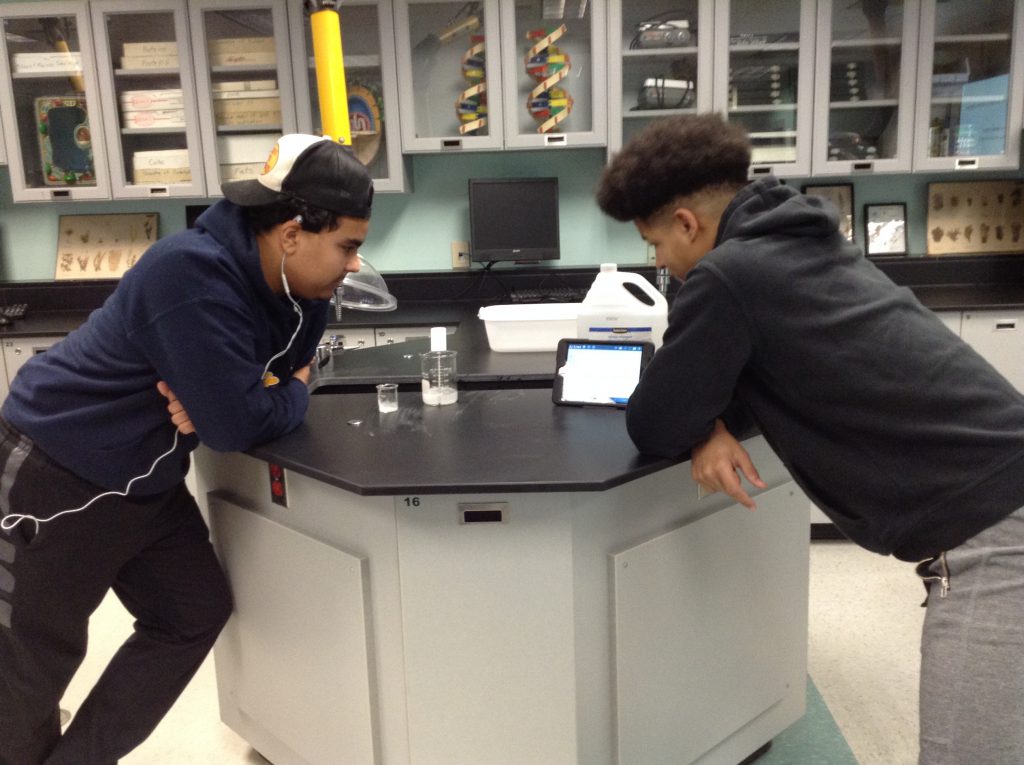
Students at Chatham Kent Secondary School using PASCO’s wireless temperature sensor to measure temperature changes in endothermic reactions.

Students at Chatham Kent Secondary School using PASCO’s wireless temperature sensor to measure temperature changes in endothermic reactions.
The Mi’kmaw Kina’matnewey (MK) is equipping their communities’ grade 7 and 8 science classrooms with PASCO sensors on the heels of their 2016 purchase for elementary schools
IN 2016 the MK facilitated the purchase of a comprehensive package of science probes for their member communities’ elementary schools. The probes enable students to collect real world measurements to help in their understanding of concepts relating to temperature, light, sound, weather and life sciences. To ensure that the teachers were comfortable and proficient in the use of probes a full-day training session was provided at a central location.

This year the MK continues to ensure that their communities’ pupils have equivalent access to instructional technology by equipping their middle school programs with a range of wireless sensors for teaching grades 7 and 8 science. The sensors acquired include Temperature, Pressure, Light, and Conductivity which they look forward to using with their Chromebook computers.
In addition to equipping middle school grades, the MK will also pilot a comprehensive set of probes at one of their communities’ High School.
Allan Mackenzie, the MK’s Technology Integration Specialist, coordinated this year’s acquisition after extensive consultations with both teachers and AYVA’s Product Specialists.
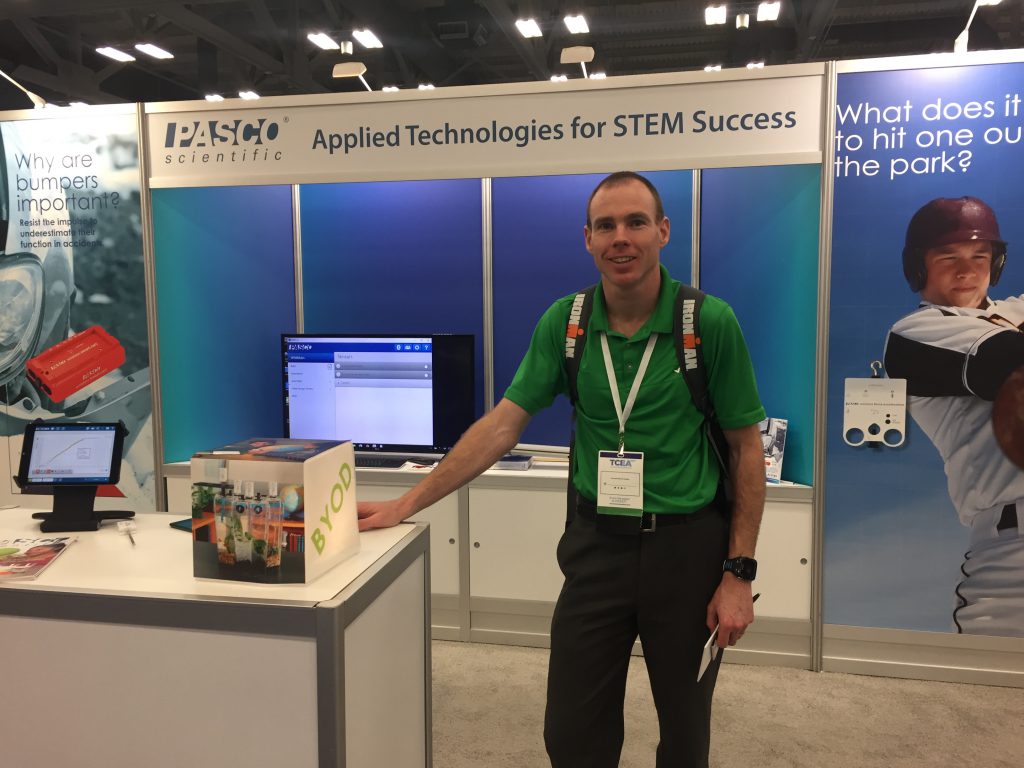
AYVA is delighted to be working with MK and look forward to supporting their schools for many years to come.
It seems that many public schools are operating with science budgets that haven’t increased in over 20 years and are barely sufficient to purchase the consumable requirements for the year. However, despite this wide spread apparent lack of funds many schools are still finding the means to make a significant investment in wireless sensor technology. When possible we ask our customers how their purchase is being funded. See below for a summary of the range of responses we’ve received. Regardless of the funding source, the following points are often incorporated in the successful grant proposals.
Wireless sensors:
Click here for a presentation on the educational arguments for wireless sensors:
Popular Funding Sources
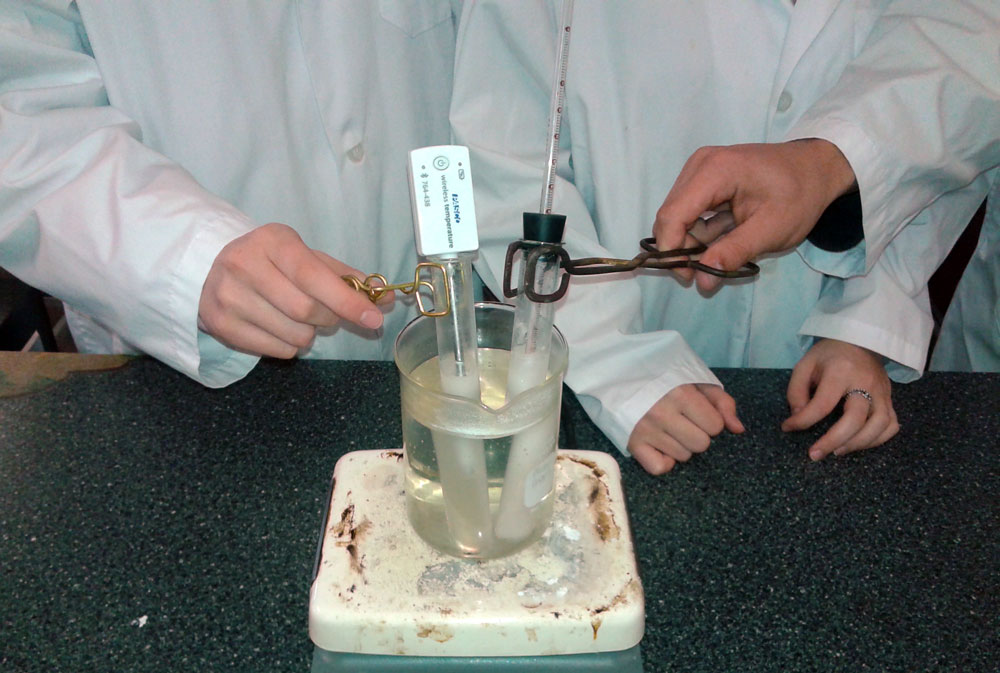 In this lab we melted wax in a test tube and measured the temperature as it cooled over 30 minutes.
In this lab we melted wax in a test tube and measured the temperature as it cooled over 30 minutes.
The students were asked to draw a graph (cooling curves) of their results and were able to compare it with the more accurate data from the thermometer.
It was great to be able to show the students what their graphs should look like.
Tamara Manweiler
Maple Ridge Secondary School
Respiration is a process in a living organism that involves the exchange of Oxygen and Carbon Dioxide. When humans breathe oxygen is inhaled into the lungs and then absorbed into the blood stream. Carbon dioxide of course flows in the opposite direction and is exhaled. Over the course of day this continuous cycle is carried out 19,000 times. But what happens when we interrupt the cycle by holding our breath?
Our test subject in the video explores what happens to his lung’s CO2 levels when holding his breath for varying times.

Wireless CO2 Sensor PS-3208 $309 (Available Summer 2017)
Valentine’s Day is here and attractive forces are on everyone’s mind. In science, a general rule is “opposites attract.” In solution chemistry, there is another saying, “like dissolves like.”
Although “like dissolves like” sounds as if it contradicts “opposites attract,” it is actually an extension of the same physical phenomenon. For example, polar molecules will be attracted to other polar molecules through the attraction of the opposite partial charges on the atoms. Therefore, charged (or partially charged) solutes will dissolve in charged (or partially charged) solvents. So “like does dissolve like.”

Hydrogen bonding will occur between the polar -OH group on the ethanol molecule and the polar water molecule.
A quick demonstration highlighting “like dissolves like” can be performed with some canola oil, water, and a colored ionic compound such as copper(II) chloride.
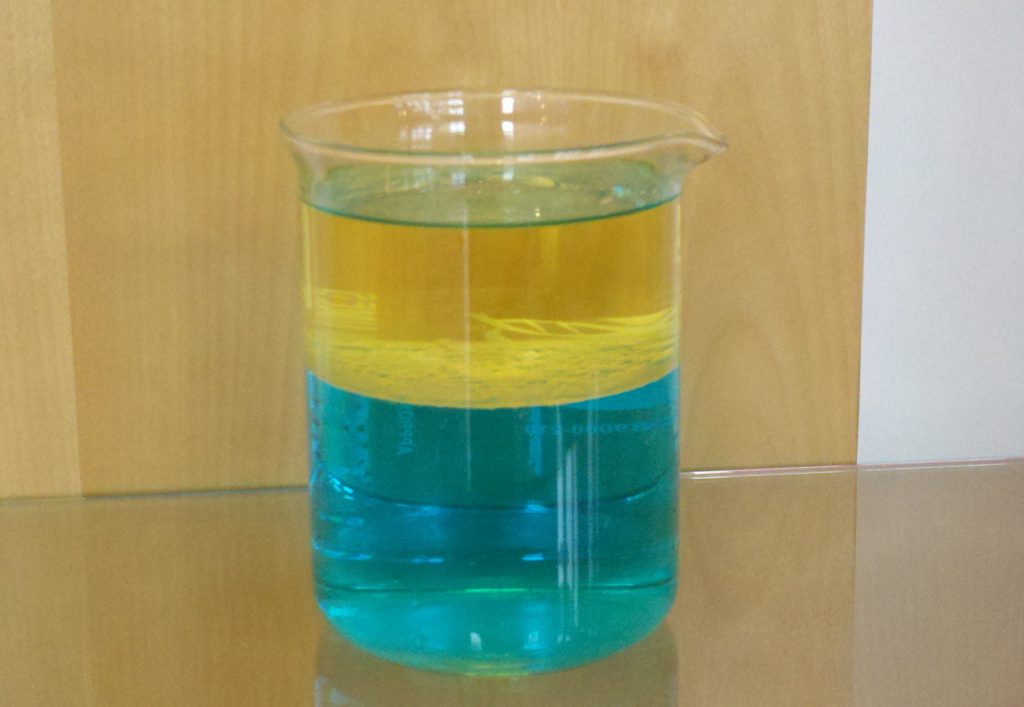
Copper chloride dissolves in the water layer but not in the oil layer.
To demonstrate nonpolar solubility, you can use hexane, water, and iodine. In this case, the nonpolar iodine will dissolve in and color the nonpolar hexane, but it will not affect the polar water. London dispersion forces can be used to explain the nonpolar–nonpolar interaction.
Finally, you can create an inquiry experiment for your students by having them determine if unknown compounds are more polar or nonpolar, based on their relative solubility in water. If you are testing unknown compounds that are not colored, you can measure another property of the mixture, such as pH or conductivity, using the Wireless pH or Wireless Conductivity Sensors, to determine if the solute will dissolve in the polar solvent.
With these quick demonstrations and activities, you can use the students’ established ideas about forces of attraction to introduce the important concepts of molecular structure and “like dissolves like.”
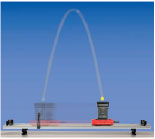
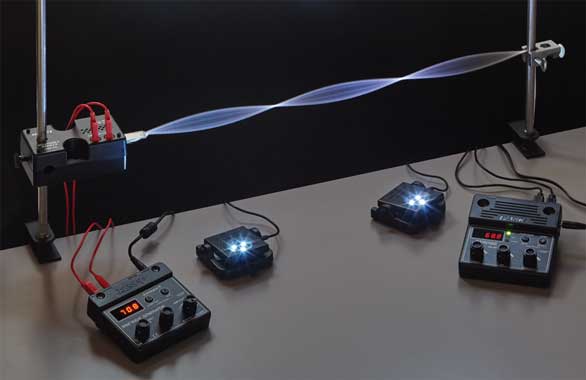
Rick Debenedetti from Streetsville Secondary School in Mississauga demonstrates how to use a Smartphone, a Smart Cart and a Wireless Light Sensor to investigate the relationship between light intensity and the distance from a single point source of light.
PAStrack (ME-6960) $172
Wireless Light Sensor (PS-3213) $141
Wireless Smart Cart (ME-1241) $325
Smart Phone with Flashlight App
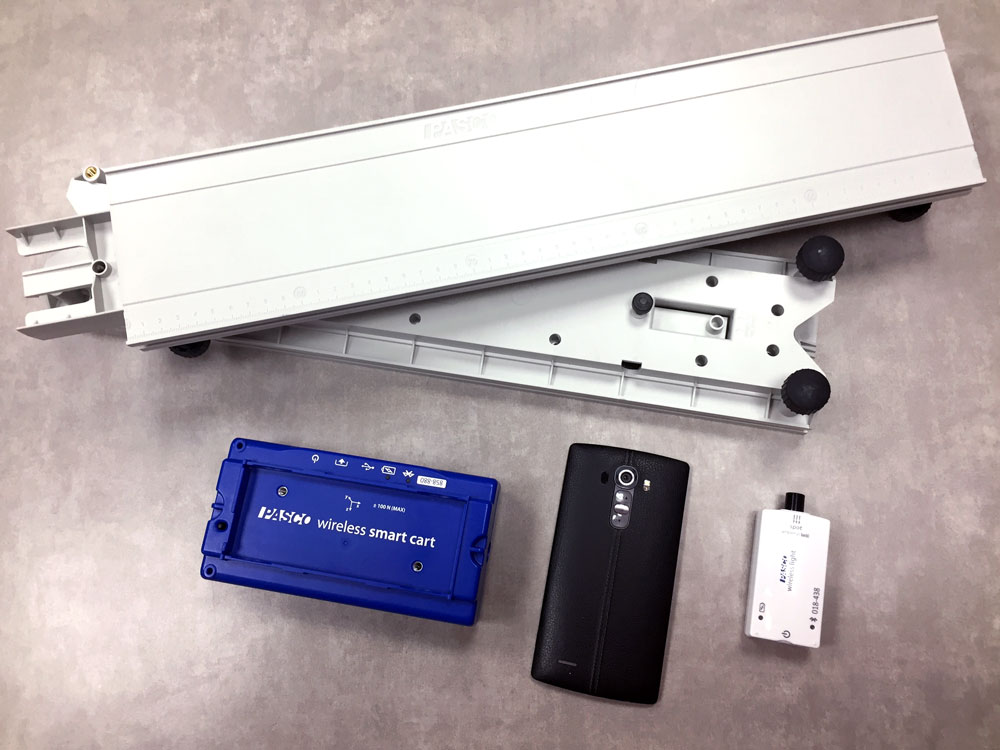
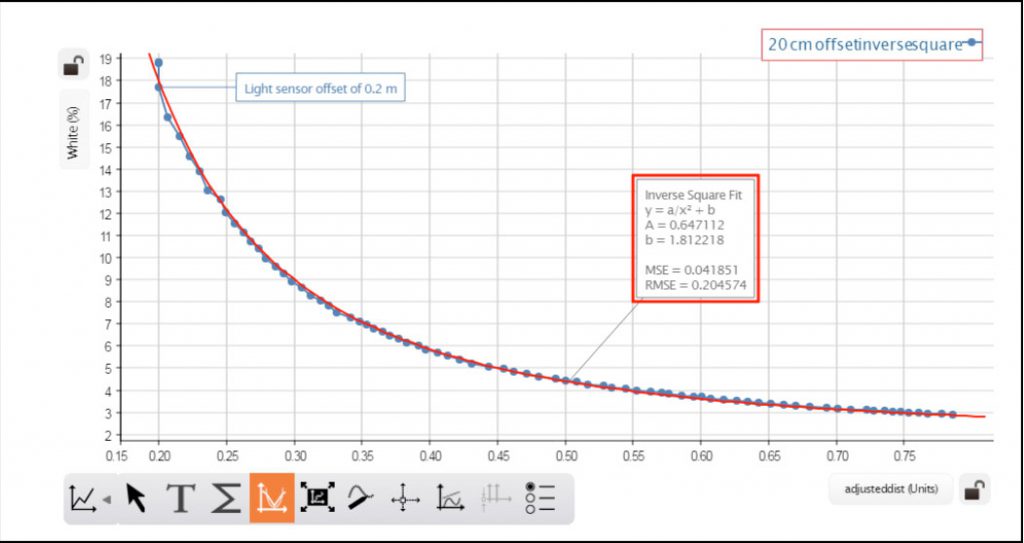
The Blue Line shows the connected data points of the light sensor readings plotted against the Smart Carts position sensor readings. The red line is the applied Inverse Square Fit. Notice how well the Inverse Square Fit curve matches the plotted data.
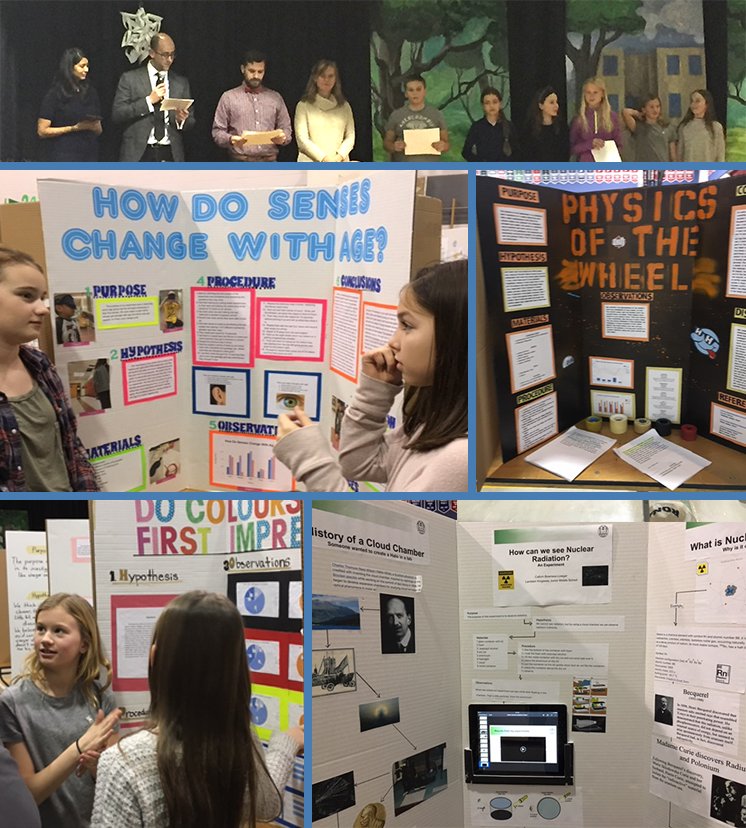
Lambton-Kingsway School has enjoyed a long-standing tradition of community involvement and academic excellence, so it was no surprise to see so many family members turn out yesterday for the final judging of the Grade 6, 7 and 8 Science Fair.
As principal Kelly Caddel noted, this initiative started back in the fall, and it represents a significant commitment by students and teachers alike.
AYVA was happy to sponsor an award for each of the grade level winners who will be moving on to the Regional Competition. We were pleased to see how enthusiastic Lambton’s students were about pursuing their STEM-related investigations… it was inquiry-based learning at its best!
Pictured above are just some of this year’s Science Fair Projects and junior scientists – all of whom were excited to articulate and showcase their findings.
I have taught grade 9 applied science, science and technology, grade 10 applied, regular and enriched science, grade 11 chemistry and physics for 33 years at Westwood Senior High School in Hudson Québec. I discovered the PASCO equipment in 2019 and it completely changed my life. I love to discover, produce experiments and share discoveries. I am looking forward to work with your team.
Having graduated with a major in Computer Science and minors in Physics and Mathematics, I began my teaching career at Killarney Collegiate Institute in Killarney, Manitoba in 2009. While teaching Physics there, I decided to invest in PASCO products and approached the Killarney Foundation with a proposal about funding the Physics lab with the SPARK Science Learning System and sensors. While there I also started a tremendously successful new course that gave students the ability to explore their interests in science and consisted of students completing one project a month, two of which were to be hands-on experiments, two of which were to be research based, and the final being up to the student.
In 2011 I moved back to Brandon, Manitoba and started working at the school I had graduated from, Crocus Plains Regional Secondary School. In 2018 I finally had the opportunity to once again teach Physics and have been working hard to build the program. Being in the vocational school for the region has led to many opportunities to collaborate with our Electronics, Design Drafting, Welding, and Photography departments on highly engaging inter-disciplinary projects. I believe very strongly in showing students what Physics can look like and build lots of demonstrations and experiments for my classes to use, including a Reuben’s tube, an electromagnetic ring launcher, and Schlieren optics setup, just to name a few that have become fan favourites among the students in our building. At the end of my first year teaching Physics at Crocus Plains I applied for CERN’s International High School Teacher Programme and became the first Canadian selected through direct entry in the 21 years of the program. This incredible opportunity gave me the opportunity to learn from scientists working on the Large Hadron Collider and from CERN’s educational outreach team at the S’Cool Lab. Following this, I returned to Canada and began working with the Perimeter Institute, becoming part of their Teacher Network.
These experiences and being part of professional development workshops with the AAPT and the Canadian Light Source (CLS) this summer has given me the opportunity to speak to many Physics educators around the world to gain new insights into how my classroom evolves. As I work to build our program, I am exploring new ideas that see students take an active role in their learning, more inter-disciplinary work with departments in our school, the development of a STEM For Girls program in our building, and organizing participation in challenges from the ESA, the Students on the Beamline program from CLS, and our local science fair.
Though I graduated with a BEd qualified to teach English and Social Studies, it just wasn’t meant to be. My first job was teaching technology courses at a local high school, a far cry from the English and Social Studies job I had envisioned myself in. I was lucky enough to stay in that position for over ten years, teaching various technology courses in grades 10-12, while also obtaining a Master of Education in Technology Integration and a Master of Education in Online Instructional Media.
You will notice what is absent from my bio is any background in science. In fact, I took the minimum amount of required science courses to graduate high school. Three years ago I switched roles and currently work as a Technology Integration Leader; supporting teachers with integrating technology into their pedagogy in connection with the provincial outcomes. All of our schools have PASCO sensors at some level (mostly grades 4-12) and I made it my professional goal to not only learn how to use them, but to find ways to make them more approachable for teachers with no formal science background (like me!). Having no background or training in science has allowed me to experience a renewed love of Science, making it easier for me to support teachers in learning how to use PASCO sensors in their classrooms. I wholeheartedly believe that if more teachers could see just how easy they are to use, the more they will use them in the classroom and I’ve made it my goal to do exactly that.
I enjoy coming up with out-of-the-box ways of using the sensors, including finding curriculum connections within subjects outside of the typical science realm. I have found that hands on activities with immediate feedback, which PASCO sensors provide, help students and teachers see the benefits of technology in the classroom and will help more students foster a love of science and STEAM learning.